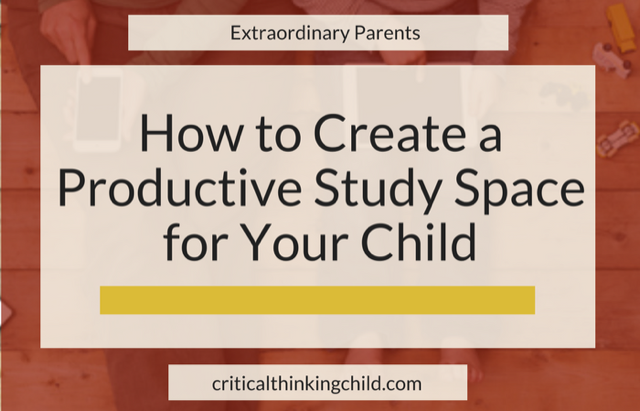Did you know that studying is different from homework?
Often, these two ideas end up intertwined, when they’re actually very different. Homework is an extension of classwork, often due within a set time. It’s assigned by the instructor and once finished it is turned in.
Studying, on the other hand, occurs when students review specific skills and concepts that they will be tested on. While homework is an exercise in practicing these skills, studying is the act of reviewing them. Studying often isn’t attached to a specific assignment (though it can be).
The information your child learns in school is just the tip of the iceberg. It’s an initiation into concepts and ideas that can be nurtured through studying. The benefits of studying are endless. They help your child think more creatively and critically, learn new concepts more quickly, and gain confidence.
Creating a safe, clean study space at home will prepare the brain for learning and enhance your child’s academic performance. Here are some tips for creating an optimal study space in your home.
Select a study area designed for learning
Your child’s study area doesn’t have to be huge, but it does need to be tidy and specifically dedicated to studying. Don’t try to create a space with a dual purpose. If your child associates the space with studying, video games, and texting it won’t be as effective. Instead, designate a single spot in your house for studying and studying alone.
The chosen space should be free from interruptions and distractions, especially technology and loud younger siblings. Comfort is key, but a happy medium is important; it can’t be so comfortable that your child risks falling asleep. Make sure there’s a comfortable chair, good lighting, and a desk at an appropriate height that encourages good posture.
Keep supplies close and organized
Make sure your child’s study area is stocked with any supplies that could be needed for schoolwork: pencils, pens, highlighters, rulers, clocks, timers, and digital devices like laptops and tablets. Having everything in one place will negate the need for getting up to search, which could cause distraction.
In addition to having all the supplies close at hand, create an organizational system that makes them easy to find. For example, you can designate a cup for pens and pencils or fill a small caddy with specific materials. Make sure you have extra supplies somewhere else in the house in case your child runs out; this way you don’t have to interrupt study time to go to the store.
Finally, all supplies should be in working condition. This means sharpened pencils, unbroken crayons, and plenty of fresh paper. Additionally, digital devices should be charged and updated so they’re ready to go.
Manage time effectively to prevent burnout
It’s important to make sure your child studies for the optimal amount of time. Too little is ineffective, but too much can be overwhelming and exhausting. Not sure how long your child should spend studying? Start with half an hour to forty-five minutes and see how they do. Adjust accordingly.
Plan the amount of time to spend studying beforehand and set a timer to help with time management. Make sure your child takes a short stretch break periodically and stop the clock during breaks to avoid wasted time.
Before you start, warm up the body and the brain
Make sure your child is not too tired and that basic needs are met before the study session begins. Your child should go to the bathroom, eat a snack, and have water nearby to avoid dehydration.
You can warm up your child’s mind with quick 5-minute brainteaser activities that promote whole brain learning. Spatial puzzles in particular are great for helping your child focus and concentrate. You can get started with our own abstract and spatial puzzles book, which will guide your child through a series of activities designed to warm up the brain.
Studying is an important part of your child’s learning habits
As a parent, you’re in a position to create the optimal studying environment, making it an easy, fun, and productive experience.
What does your child’s study space look like? Let us know in the comments.



